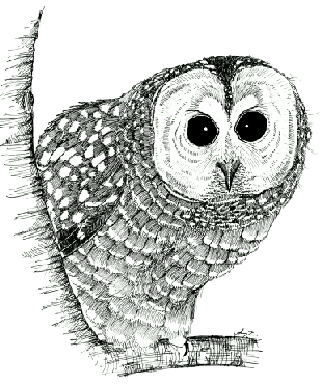For nesting, the Spotted Owl prefers natural tree cavities 20 metres or more above ground. The female usually lays just two eggs, and incubates them for 28 to 32 days. The owlets leave the nest at 32 to 36 days but do not take flight for a week or more after that. They start to hunt once they are 9 to 10 weeks old, and by the end of summer are independent and disperse to locate a territory of their own, usually within 100 to 200 km of where they grew up. However, mortality is very high for juveniles, at 60 to 95%. It is thought that most deaths are due to starvation. Conservation: The Spotted Owl is considered endangered in both Canada and parts of the USA. The total size of the Pacific population in both countries is estimated to be only 3,000 to 6,000 pairs. The Spotted Owl was once much more common, but only 10% of the old growth forests within its range remain intact, and it is this loss of habitat which has caused their population to decline. Although Spotted Owls have a relatively long lifespan of roughly 15 years, they do not breed every year like most other owls. If Spotted Owls sense that prey availability is low, they often choose not to attempt to raise a family. As habitat continues to shrink, it is likely that Spotted Owls will decide against nesting more and more often. The Spotted Owl is part of a very complex ecosystem. Many people now are aware that the Spotted Owl needs old growth forests to survive, but there are dozens of other less well-known species which are equally dependent on this increasingly rare habitat. One of these is the Red-backed Vole, a small rodent which is among the Spotted Owl’s favourite prey. The vole eats truffles, the mushroom-like part of the fungi known as mycorrhiza which live in the tips of tree roots. Coniferous trees are highly dependent on mycorrhiza for strong growth. Because of the interdependence of these organisms, the Spotted Owl can be considered an indicator species. If the Spotted Owl population is strong, that means that there are voles, which in turn means there are fungi and the forest is healthy. If Spotted Owls are absent, it is a warning sign that the ecosystem is under stress. |
